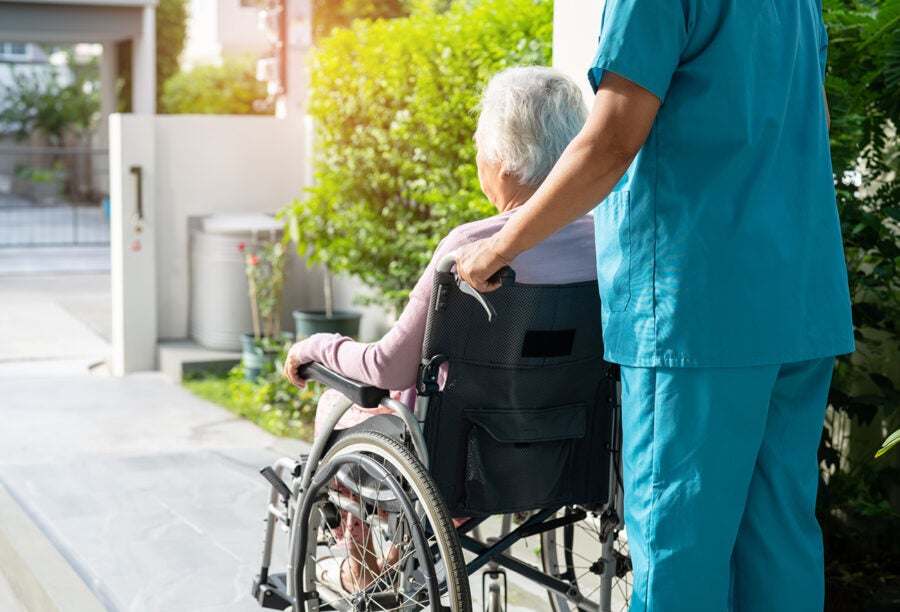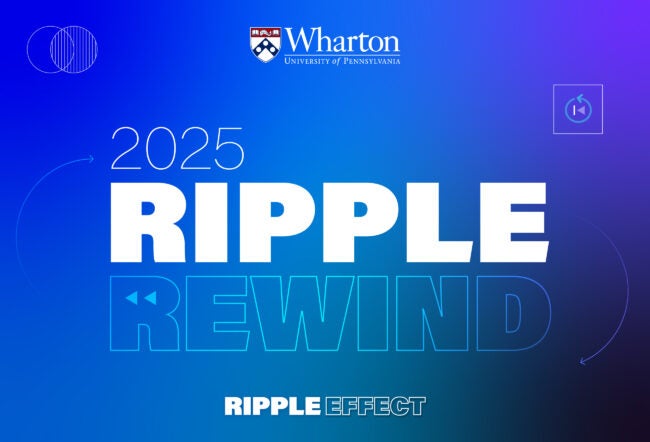Aging America needs more investment in nursing homes, and private equity (PE) can be a worthwhile source. But a study by experts at Wharton and elsewhere revealed a mixed bag of patient outcomes.
The study found that PE-owned nursing homes tend to admit patients with lower health risk, likely because they are cheaper or more profitable to serve. At the same time, PE ownership of nursing homes triggers an 11% increase in mortality. Declines in measures of patient well-being, nurse staffing, and compliance with care standards help to explain the mortality effect, according to a paper titled “Owner Incentives and Performance in Healthcare: Private Equity Investment in Nursing Homes.”
“Overall, we conclude that PE has nuanced effects with adverse outcomes for a subset of patients,” said Wharton professor of health care management Atul Gupta, who co-authored the paper with finance professors Sabrina T. Howell from NYU Stern School of Business, Constantine Yannelis from Chicago Booth School of Business, and Abhinav Gupta from UNC Kenan-Flagler Business School.
The U.S. nursing home segment is sizable, with $166 billion in spending in 2017; spending is projected to grow to $240 billion by 2025, the paper noted, citing prior research. It suffers from “severe market frictions,” such as a heavy dependence on government subsidy — the average nursing home receives 75% of its revenue from the government. Patients are especially vulnerable and tend to go to the closest facility, overlooking nursing home ratings.
The Lure of Oversized Profits in Private Equity
“Private equity is driven by more than the usual profit motive,” Gupta said, explaining that in a regular for-profit firm, the owners are interested in keeping it as an ongoing firm. “And because they have this short-term focus, they will find ways to increase profits. And they can do it in a way that does not benefit patients. That is the crux of the issue.”
Even so, nursing homes appear to be an attractive investment destination for PE investors. Gupta and his co-authors covered data on 12,400 for-profit nursing homes between 2000 and 2017, sourced from the Centers for Medicare & Medicaid Services (CMS). They included 1,674 nursing home acquisitions by PE firms through 128 deals. Their study is the first to use a national sample of PE acquisitions over two decades to track their causal effects on nursing homes, especially patient mortality.
“Private equity is driven by more than the usual profit motive. They will find ways to increase profits, and they can do it in a way that does not benefit patients.”— Atul Gupta
PE ownership of nursing homes brings short-term, high-powered incentives to maximize profits, the paper noted. They have fewer long-term interests in the business such as relationships with various stakeholders, compared to other for-profit owners such as publicly held firms or independent private firms.
The general partners in PE firms who manage the nursing home investments are compensated with a share of the profits when they sell the nursing homes after three to seven years. That setting emboldens them to adopt “aggressive and short-term value-creation strategies.” They drive the nursing homes they acquire to take on big risks such as high leverage (debt relative to equity or firm value); the PE firm does not have responsibility for that debt. Consequently, big chunks of the cash flows of those nursing homes will go towards interest payments.
How Nursing Home Patients Can Be Underserved
Patients with limited literacy levels or whose decision-making is impaired by cognitive declines face severe information frictions, and may make choices that are not in their best interest, the paper noted. Those factors “can weaken the natural ability of a market to align firm incentives with consumer welfare,” it added, citing prior researchers.
PE investors can be choosy about the nursing homes they acquire, and also pursue more financially attractive patients. Consequently, PE buyouts have led to declines in measures associated with costly care, such as cognitive impairments and inability to perform activities of daily living, the paper pointed out. After adjusting for patient preferences for nursing facilities that are closer to their homes, the study found that a PE-owned nursing home has an increase in mortality of 11%; that effect is detectable as early as 15 days after discharge.
Gupta and his co-authors identified three factors that corroborate their findings on the mortality effects of PE ownership of nursing homes. The first is nurse availability: PE ownership leads to a 3% decline in hours per patient-day supplied by frontline nursing assistants. These frontline nurses provide the vast majority of caregiving hours and perform crucial well-being services such as mobility assistance and cleaning to minimize infection risk, the paper noted.
The second factor is the system of Five-Star ratings that the CMS has constructed to provide information on the quality of care. Here, the study found that PE ownership has negative effects on the ratings. Significantly, the nursing homes with the most quality declines are those that receive larger than average shares of their revenue from Medicare funding.
“[Private equity investors are] profit-oriented, but they are more efficient, and they lead to higher growth, so they can be a force for good.”— Atul Gupta
The ratings are meant to give consumers a sense of how good or how bad the nursing home is before they choose one for their parents or for themselves, Gupta said. “But the reality is that the execution [of the ratings] is not as good as it could be.” The Five-Star ratings also don’t include mortality as one of the outcomes, which he said is “a glaring omission.”
The third dimension of the uninspiring effects of PE ownership of nursing homes is on patient well-being. The study found PE ownership leads to a decrease in mobility, increase in ulcer development, and an increase in pain intensity.
“Taken together, our results indicate nuanced effects of PE ownership,” the paper stated. “Overall, it seems likely that PE ownership either does not affect or benefits more sophisticated patients, but adversely affects those who face more information frictions, since we find the greatest effect for patients most likely to go to a PE facility due to distance,” it added.
Aligning PE Incentives with Customer Interests
All considered, the paper noted that restricting PE ownership of nursing homes is not an option. For one, PE investments help increase capacity — a vital need. PE firms also increase efficiency in terms of profit maximization.
“Private equity is just an economic actor that’s trying to make a return on their investment,” said Gupta. “There’s a lot of evidence from other sectors — not health care — which shows that private equity is more efficient than traditional for-profit firms. They’re profit-oriented, but they are more efficient and they lead to higher growth, so they can be a force for good.”
But the paper does call for policy changes that better align PE incentives with the interests of consumers, or patients. “If payments were designed to better align incentives between firm owners and patients (as well as taxpayers), it seems likely that PE-owned nursing homes would behave differently, leading to better outcomes for patients,” it stated.
Specifically, Gupta said the CMS could enhance its rating system, for example, by linking provider payments to performance, which could include metrics like quality and efficiency. Linking performance to their payment is not a radical concept, he noted, pointing out that the government has already introduced that in the case of hospitals.
Future research could focus on designing government programs to better align the interests of PE-owned firms with those of taxpayers and consumers, the paper advised.



